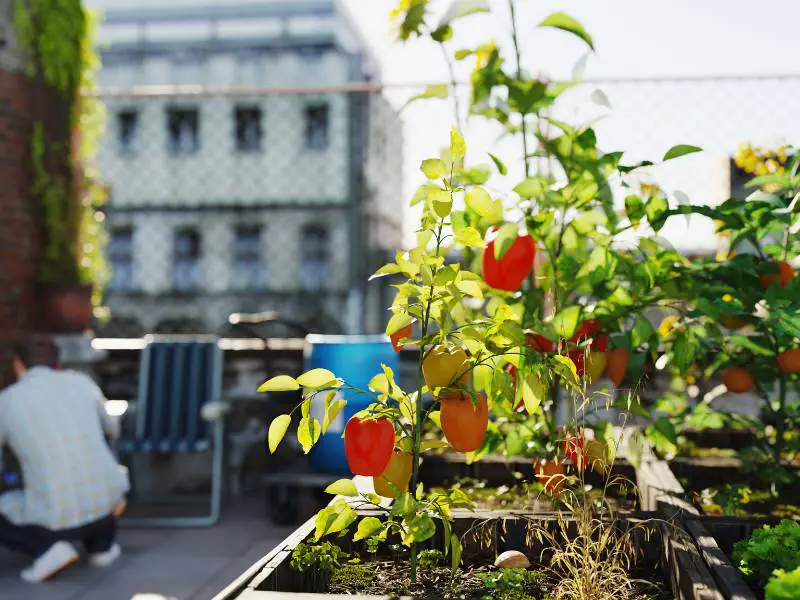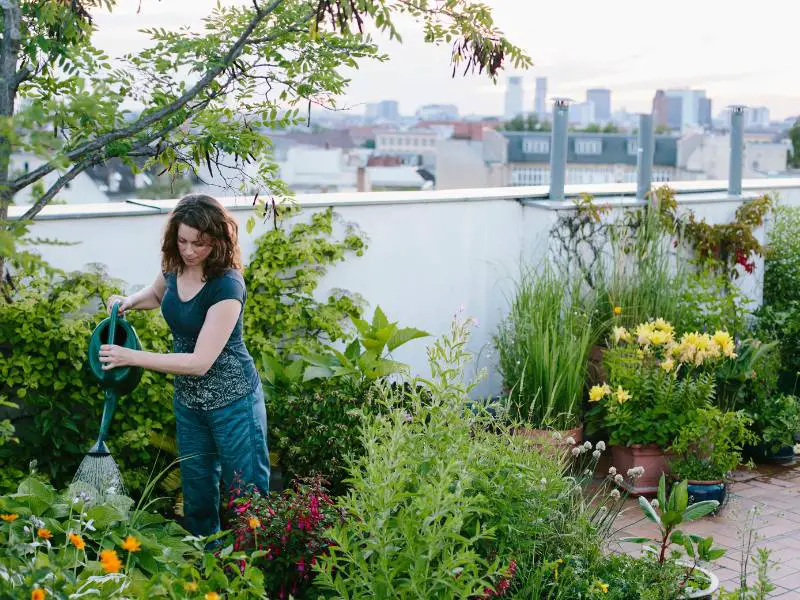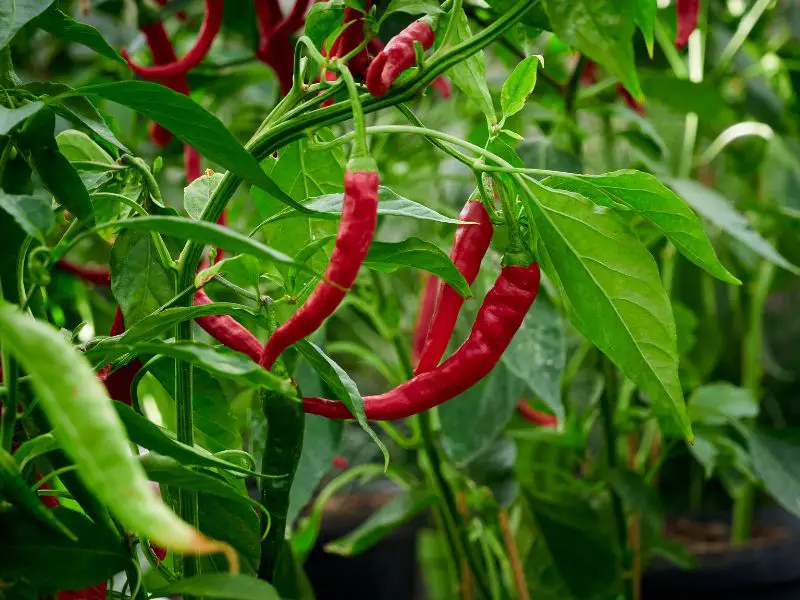With the growing ecological consciousness and sustainability trend, urban gardens are becoming more popular. From vegetable gardens to flower beds, there is something joyous about potting a garden right in the middle of the living space. But starting an urban garden can be overwhelming for those who have never done it. In this article, I will walk you through what you need to know to start your urban garden.
Urban gardening is the method of growing plants and vegetables in urban areas, often in small spaces such as balconies, rooftops, or backyards. It can involve container gardening, community gardens, vertical gardens, and more. Urban gardening is a great way to create green spaces in cities, bring communities together, and provide fresh produce for those who don’t have access to it.

History of Urban Gardening
Although it has lately had a comeback, urban gardening is not a new practice. We may trace its origins back to ancient Egypt when people used communal wastes to bolster urban agriculture. Since then, urban gardening has been used to solve food shortages. Throughout the United States, they created the iconic Victory Gardens during World War I and II in response to food shortages.
At its height, the Victory Gardens initiative had up to 6 million individuals involved in the effort. It generated approximately ten million pounds of fruits and vegetables, accounting for roughly half of all produce farmed in the United States at the time.
Advantages of Urban Gardening
- Provides fresh, organic produce in an urban environment
- Offers a way to connect with nature in an otherwise concrete jungle
- Gives people a chance to learn about sustainable gardening practices
- Can be done on a small scale, making it accessible to most people
- Can provide a source of income for some people
- Reduces the environmental impact of transportation of food from rural areas
- Enhances the aesthetic beauty of an urban area
- Increases biodiversity in the city
- Can be used as a form of therapy and relaxation
Challenges When Gardening in Cities
- Limited space: City gardens are often limited in size and can be challenging to fit all the desired plants and features.
- Lack of sunlight: Tall buildings and trees can block out the sun, making it difficult for plants to get enough light.
- Air pollution: City air can contain pollutants that can damage plants or make them more susceptible to disease.
- Soil quality: Urban soils tend to be compacted and lack nutrients, making it difficult for plants to thrive.
- Pests: Cities are often home to various pests that can damage plants or spread disease.
- Access to water: It can be difficult to access water in cities, which is essential for healthy plant growth.
Planning, Tools, and Supplies Needed for Urban Gardening
Urban gardening is a terrific method to introduce green areas to cities and towns, and you can do it in a range of sizes, from little window boxes to bigger community gardens. You can also use this kind of gardening in several locations.
Planning is an essential aspect of urban gardening since it assists you in deciding what to grow, where to grow it, and how to care for your plants. It is also essential to have the appropriate equipment and materials, like containers, soil, seeds, and fertilizer. It is vital to employ the appropriate equipment and materials to guarantee that your plants are successful in the urban setting in which you’ll keep them.
Planning
Even though caring for plants is hard work, they only need three basic things to grow: light, soil, and water. Most plants can grow well in a pot, and you don’t even need to plant them on the ground.
- Sunlight is a must. Find a spot for the plant that gets at least six to eight hours of sunshine each day at the very least.
- Plants can be cultivated on rooftops with proper authorization, in window boxes, patios, and baskets on balconies.
- Soil depth is crucial. Plants with shallow roots require a minimum of 6 inches of soil if they are less than 1 foot tall. Plants with deeper roots require a minimum of 1 foot of soil.
- Proper drainage is essential to prevent root rot in plants. When selecting a pot, ensure it has drainage holes
- Soil nutrients are vital. Potting soil is more lightweight and allows for better drainage of excess water compared to standard soil
- Remember to water your garden! Each time you water, be sure to get the whole container. It is also integral not to overwater the plants. To avoid root rot, empty any extra water in the saucer under the plant.

Tools and Supplies
The following is a list of some standard equipment and materials used in urban gardening, along with their respective functions:
- Containers or pots: Plants may be grown in confined places using pots or containers, on which you can grow from various materials like clay, plastic, or metal.
- Potting soil: A fine-textured, lightweight soil mixture developed especially for container gardening. It has excellent drainage and appropriate nutrients for plants grown in containers.
- Seeds or seedlings: You may start new plants in your yard using seeds or seedlings. These are the two options. You may get seeds or seedlings from a garden store or shop for them online.
- Fertilizer: You can use fertilizer to give plants the essential nutrients they need to flourish and thrive. Compost and worm castings are examples of organic fertilizers that are excellent choices for urban gardening.
- Cans or hoses: Explicitly designed for watering plants are often used for this purpose. When watering tiny container plantings, a watering can or hose equipped with a fine nozzle are excellent tools.
- Gloves: Gloves for the garden shield your hands from the elements as you tend to your plants.
- Pruner or scissors: Either a pair of scissors or a pair of shears may be used to prune and shape plants.
- Garden trowel: A garden trowel is a simple hand tool used for various gardening tasks, including digging, planting, and moving soil.
- Garden rake or hoe: A garden rake or a hoe may break up hard soil and pull weeds from a garden.
- Hat or sunscreen: Wearing sun protection when gardening, such as a hat and sunscreen, is crucial to protect your skin from the sun’s potentially damaging ultraviolet radiation.
- Kneeler/pad or stool: These items promote comfort when working in the garden, mainly in tiny urban gardens. Examples of these items are a kneeler, pad, or stool.
- Sunlight meter: This instrument determines the quantity of available sunlight and the temperature to pick and arrange the appropriate plants.
Consider that this list is incomplete and that the equipment and materials you need might differ depending on the size and style of the urban garden you want to cultivate.
What Are the Best Crops for Urban Gardening?
Begin cultivating vegetables with these small-area-appropriate and simple-to-cultivate varieties
1. Peppers
Both spicy and sweet peppers grow nicely in pots. Because peppers prefer warmth and full light, they are usually transplanted into five-gallon pots rather than sown directly.

2. Beans
Growing beans is simple and can be done by using seeds, including dried beans found in your kitchen cupboard, or by selecting varieties that can be consumed fresh, like green beans. Bush beans are smaller and do not require support, while you can train pole beans to climb up trellises or fences using vertical space. A two-gallon container is an appropriate size for planting.

3. Salad Greens
Growing salad greens in pots are highly gratifying, as they have a shallow root system and multiply. They can be planted directly by seed in the early spring and fall. Wide salad varieties tolerate shade, making them ideal for indoor gardening.

4. Tomatoes
Smaller tomato types, such as the adorable Tiny Tim, will survive in five-gallon pots. Start seedlings inside and transplant them in the summer; tomatoes need a lot of sunlight. Avoid blossom end rot by incorporating crushed eggshells into the soil.
5. Summer Squash
Did you know that you can grow squash in a container as small as a five-gallon bucket? If you want a more easily handled crop, use a smaller variety, such as Pattypan squash.

6. Peas
Peas are an excellent way to use vertical space, which is advantageous for anybody working in a close location. When peas are a few inches tall, teach them to ascend to a trellis or fence.
7. Root Vegetables
Root vegetables such as radishes, turnips, and carrots can be planted in one-gallon containers and are simple to sow directly. They do not tolerate extreme heat well, making spring or fall the best seasons to produce them.
8. Green Onions
If space is limited, consider planting spring onions instead of bulb onions. They thrive in one-gallon containers. Spring onions can be sown directly or grown from the tips of store-bought green onions planted in soil.

Bottomline
In conclusion, urban gardening is a great way to bring the benefits of nature into urban areas. It can help to improve air quality, reduce noise pollution, and provide food for local communities. Additionally, it can be used to create green spaces and beautify neighborhoods. Urban gardening can foster community and bring people together in a shared space. Overall, urban gardening is essential to creating sustainable cities and promoting healthy lifestyles. Thanks for reading!
Related: How To Grow Strawberries, How To Grow Dragon Fruits, Vegan Alternative Protein Sources


5 thoughts on “Bring a Touch of Nature to the Concrete Jungle and Create an Urban Garden”